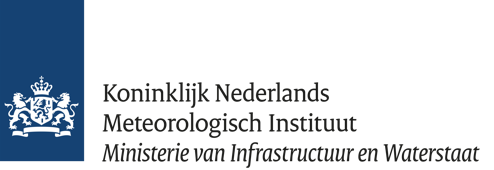Space Weather at KNMI
Welcome
Welcome to the home page of the space weather team at KNMI, the Royal Netherlands Meteorological Institute. This team is part of the R&D Satellite Observations department at KNMI. On this page, we will share information on our activities, data and tools.
About space weather
Our sun is a magnetically active star that has a strong influence on the conditions in the Earth's upper atmosphere and plasma environment where the atmosphere transitions into outer space. This space weather can be quite violent and can have a profound influence on infrastructures like satellites, GPS, aviation, power grids, telecommunication, gas and water supplies, the financial sector, and emergency services, the so-called vital sectors that are critical for our national security and economic vitality. In addition to the well known weather alerts, KNMI now also issues space weather alerts so that our society can be prepared for the effects of space weather. KNMI collaborates with national and international partners to provide space weather forecasts.
Tools
- Our main research tool for the analysis of space weather observations is the Space Weather Timeline Viewer. This tool aims to bring a similar level of interactivity, detail and style to space weather data that users are used to from geospatial tools, like Google Maps. The ability to stack and layer graphs using different data sources and zoom and pan between space weather events is extremely helpful, for showing connections and to provide context. The tool makes heavy use of the Heliophysics Application Programming Interface (HAPI) standard for streaming time-series data.
- The 24/7 monitoring of space weather events and dissemination of notifications from the KNMI weather room is done using a special module in the Geoweb software, developed at KNMI.
Observations
- We have built up extensive expertise on the use of space weather observations for operational monitoring and case studies, including the GOES and DSCOVR real-time space weather parameters, solar and geomagnetic proxies and indices and measurements made by low Earth orbiting satellites in the ionosphere and thermosphere.
- KNMI operates GNSS receivers on the volcanic islands of SABA and St Eustatius in the Caribbean. Two of these receivers, one on each island, have scintillation monitoring capabilities. The stations are used to monitor and study the influence of ionospheric irregularities on GNSS signals. The scintillation data are available via the INGV ESWUA portal.
Projects and collaborations
- KNMI contributes to PECASUS, one of the four global centers providing space weather advisories for civil aviation according to ICAO regulations.
- In the Swarm-SWITCH project (2022-2023), we are investigating the use of ionospheric data from ESA's constellation of Swarm satellites for monitoring space weather, and for continuous validation and data assimilation in models. Extension of the Space Weather Timeline Viewer using Swarm data and new visualisation options is a large part of the project.
- KNMI contributed to the Earth Explorer 10 Daedalus satellite mission concept phase 0 studies (2019-2021). Among other tasks, we worked on 3D visualisations of the thermosphere-ionosphere and the mission's innovative orbit concept for low altitude in-situ sampling.
